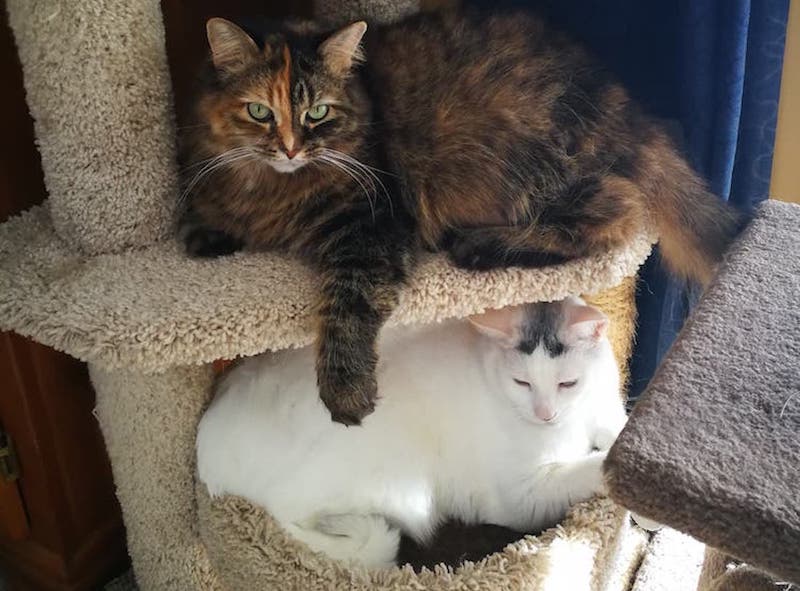One of the biggest challenges faced by many freelance writers early in their career is managing their time effectively. The transition from a steady 9-to-5 job to being self-employed is not always smooth, especially when it comes to how you spend your time.
But freelance writers are not alone in this. One study from the National Bureau of Economic Research found that office workers spent on average 50 minutes a day on non-work activities.
Another survey by VoucherCloud offers an even more grim picture — office workers estimated that they spent just 2 hours and 53 minutes during the work day being productive.
So where does all that extra time go? You probably already know the answer.
Bathroom breaks, scrolling through social media, texting, walking to get another cup of coffee, chatting with people along the way, dreamily staring out the window (if you’re lucky enough to have a window in your office), etc.
If you work in an office, you may not even realize how much time you waste during a typical work day. And you probably don’t care — you still get paid your hourly (or annual) wage regardless of how efficient you are.
That’s not true for freelance writers. You can spend all the time you want checking social media or chatting with your housemates, but no one’s going to pay you for that — suddenly these activities don’t seem as fun.
If you want to survive as a freelance writer, you need to maximize your billable hours and minimize your non-billable hours. You also need to eliminate time sinks that keep you from working. This seems like a simple thing to do, but mastering time is not always easy.
That’s where time tracking comes in. As a freelance writer, there is no boss looking over your shoulder during the day. So you have to provide your own accountability. Time tracking helps you do that. Here’s how to make it work for you.
Step 1. Identify how you (really) spend your time.
The first step to mastering your time is to know how you are spending it. You might think you know exactly what you do during the day, but time is a lot like money — it can easily slip away from you when you aren’t paying attention.
I was the same way when I started as a freelance writer. It wasn’t until I tracked how I spent my time that I realized … well, how I spent my time.
One method I used comes from Laura Vanderkam’s book, Off the Clock: Feel Less Busy While Getting More Done. She takes time tracking to a whole new level.
Vanderkam suggests that you keep a time log in which you track everything you do for an entire week, in 15- or 30-minute intervals. She has a template available on her website, but you can also use a note app on your smartphone or scraps of paper.
I actually recorded the exact time that I changed activities. This allowed me to calculate the start and end time for each activity to get the duration. But I recommend using whatever system you will stick with for the entire week.
At the end of the week, you can take a look at how you actually spent your time. How much was work-related? How much was family time? How much was billable hours versus administrative time.
I did this exercise two years ago and was surprised by how it turned out. Here’s what my full week looked like. I didn’t actually break my work time into billable and non-billable hours, but I capture this data in other ways.
Action: Track your time for an entire week using Vanderkam’s time log or whatever system works for you. Categorize the activities and calculate the time you spent doing each. Identify any trouble areas that may need to be addressed.
Step 2. Find (and eliminate) the time sinks.
When I looked at my time log, I realized that I don’t work as much as I think I do. During the week that I tracked, I spent just under 29 hours working. In my mind, I was working at least 35 hours a week — or that’s what it felt like.
The good news is that it’s not as bad as it seems.
The 29 hours was time that I was actually working. When I got up to use the washroom (personal care) or get a snack (eating) or play with my cats (pets), I stopped tracking it as work time.
What my time tracking chart doesn’t show, though, is all the times I stopped working in the middle of the day. It was rare for me to have long, uninterrupted stretches of time.
I now track these separately, making a note during the day when my work flow is interrupted.
Some of these are of my own doing — making a pot of green tea every couple of hours … which inevitably leads to needing to get rid of the excess liquid; checking the news when I should be writing; searching for books to check out from the library.
Other interruptions are (seemingly) out of my control. I work at home, so my cats often want attention in the middle of the day. Or the dirty dishes in the sink are screaming at me to be washed. Yes I can hear them screaming.
And there are transition times between one work activity and another. I’m not just a freelance health and science journalist, I also teach yoga classes. That means two days a week I drive about half an hour to a yoga studio. So there is time spent getting ready to leave the house, driving, and inevitably running errands after I finish teaching my class.
At the end of each week, I look at my list of interruptions. I identify the time sinks that are causing the most trouble. Then I come up with a plan to eliminate the ones I can, and minimize the others.
Here are some things I’ve changed since I started doing this:
- I make a pot of tea before sitting down to work and put it in a travel mug. That way I don’t have to get up to make tea after working for just an hour or two. I also chop up some vegetables to snack on if I get hungry before lunch.
- I spend more time with my cats in the morning so they get it out of their system. I also have a floor chair that I can use while working and petting my cats. Yes, cats are high maintenance.
- When I leave the house to teach yoga, I often go to the library or coffee shop afterwards to work for a few hours before running my errands. This way, I get in some solid work, and I save my errands for later in the day when my energy starts to sag.
- I check social media at set times during the day, so I’m not tempted to do it during my work hours.
Action: Write down all the interruptions that happen during your work day. Make a plan to eliminate or minimize these, where possible.
Step 3. Track your time, both billable and non-billable hours.
This is not the end of your time tracking. In fact, it’s just the beginning.
If you want to succeed as a freelance writer, you need to maximize your productivity. This means not just eliminating time sinks, but also increasing your billable hours and decreasing your non-billable hours.
Billable hours is any time you spend creating content for a client that is paying you.
Non-billable hours are everything else that you need to do in order to run your business, like tracking your deadlines, sending invoices, coordinating schedules, and talking to potential clients.
The only way to know how much time you spend on each is to track your time, in detail and consistently.
For this, I use a time tracking software. It’s a desktop app that I’ve had since I started freelance writing. It’s no longer available, but runs well on my computer so I’ve kept it. There are many great time tracking apps out there, including ones for smartphones, so I won’t offer recommendations here.
But I will tell you how I track my time.
Billable time: For every piece of paid writing that I do, I track how much time I spend on it, from start to finish. This includes content that I get paid per-word, per-hour, and per-project.
This information is extremely useful. At the end of the year, I export this data and look to see how long it takes me to create certain types of content. Then I look at how much I’m getting paid. This makes it easy to identify which clients don’t pay enough.
I also use this information to update my rates. If I know it takes 6 to 8 hours to write a journalistic news story with two phone interviews, I can make sure that when I give a client a per-project quote for that type of work, I’m getting paid for 8 hours of work.
Non-billable time: It’s also useful to track all the other time that you spend on your freelance business. This includes time spent sending out pitches, meeting with potential clients, updating your website, and taking care of your finances.
If you don’t know how long these administrative tasks take, you can easily spend way too much time on them. While some of these activities can generate billable work, the return is not immediate, so you want to be as efficient as possible when you do them.
I set up my non-billable items as separate projects in my time tracking software, which allows me to see how much time I spend on them. I track this time annually, because I look at the data at the end of the year. You could track them weekly or monthly, whatever works for your needs.
Overall work time: I also track the total time I spend working each day — my version of a time clock. My time tracking software allows me to track multiple projects at the same time, so my “work time” tracker is always running in the background when I’m working. It also shuts off when I close my computer or am away from my computer for more than a few minutes, in case I forget to turn it off.
This allows me to see how much time I actually spend working during the day. I aim for 25 to 30 hours of actual work per week. If I had a slow week, I can make it up the next week.
Here are some of the insights that I’ve gained from this time tracking:
- Since I started tracking my work time regularly in 2015, I have averaged 24 hours per week. In the past four weeks, though, I’ve been averaging 32 hours per week. This is just time spent on my writing business or doing administrative tasks for my yoga business. It doesn’t include time spent teaching yoga or driving to and from the studio.
- In 2019, I worked 1127 hours on my writing business. Two-thirds of that was spent on billable projects; the rest on administrative tasks. It was similar for the previous two years.
- In 2019, I spent 115 hours on my yoga business (I only teach two classes per week). Interestingly, two-thirds of that was time spent teaching, with the rest administrative tasks. This doesn’t include time spent driving to and from class.
Action: Find an app or system that enables you to easily track your time — with the least amount of effort. Track your billable and non-billable hours. Review this data regularly, looking for places where you can improve your efficiency — aka more time spent on billable projects and less time on administrative tasks.
Time tracking is not an end to itself. It’s just a tool that I use to see how my business is functioning — like a health checkup. If you are already doing regular financial check-ins with your business, you should consider adding a time check-in as well.
When you track your time regularly, it’s easy to see where you can make improvements in your business or your workflow. Fixing those is the next step, one that is part process improvement and part goal setting and tracking. I’ll save those for another post.
In the meantime, let me know in the comments how time tracking works for you. Did you find a way of tracking your time that works better for you? Did you gain any insights from your week-long time log? Did time tracking help you grow your freelance writing business?




